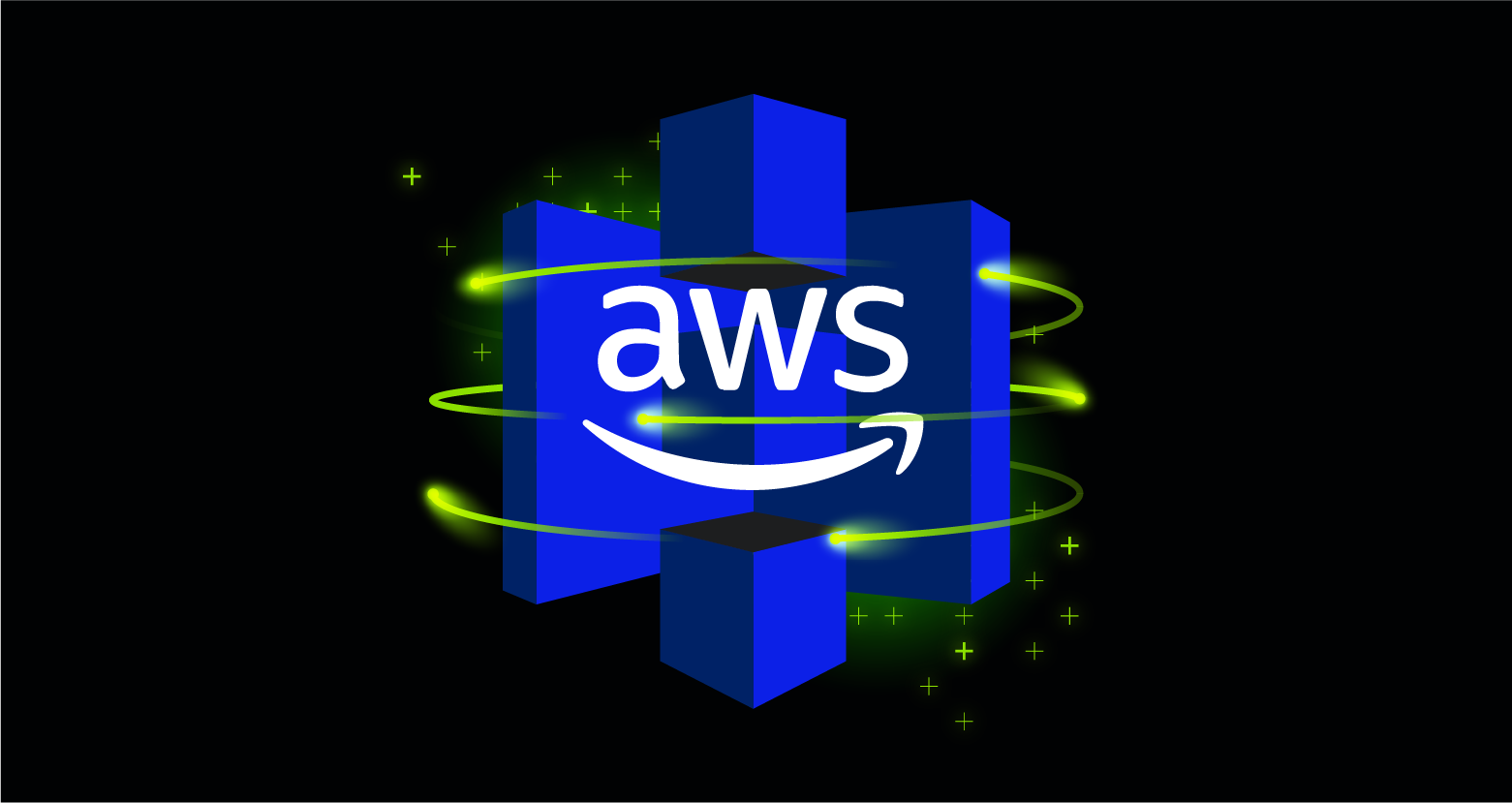What is AWS Devops?

AWS provides a set of flexible services designed to enable organizations to build and deliver products faster and more reliably by implementing DevOps practices.
These services simplify provisioning and managing infrastructure, deploying application code, automating software release processes, and monitoring your application and infrastructure performance.
Discover your weak points and strengthen your resilience: Run a Free Ransomware Readiness Test
AWS Devops Architecture
Devops in AWS helps to bring your organization together by leveraging infrastructure as code services like AWS CloudFormation and the AWS Cloud Development Kit (CDK).
Continuous deployment is done with the help of services like AWS CodeBuild, AWS CodeDeploy, AWS CodePipeline, and AWS CodeCommit.
Applications are then deployed via services like AWS Elastic Beanstalk, Amazon Elastic Container Service (Amazon ECS), or Amazon Elastic Kubernetes Service (Amazon EKS), and AWS OpsWorks to simplify the configuration of common architectures.
Using these services also makes it easy to include other important services like Auto Scaling and Elastic Load Balancing. Finally, monitoring and logging is done via Amazon CloudWatch and Cloud Trail.
AWS DevOps Tools
Devops Tools – How they work together.
AWS provides services that help you practice Devops in your organization. These tools depending on their role can be categorized into different sections.
Continuous Integration and Continuous Delivery (CI/CD)
Continuous Integration (CI) is a software development practice where developers regularly merge their code changes into a central code repository, after which automated builds and tests are run. CI helps find and address bugs quicker, improve software quality, and reduce the time it takes to validate and release new software updates.
Continuous delivery is a software development practice where code changes are automatically prepared for a release to production. Continuous delivery expands upon continuous integration by deploying all code changes to a testing environment and/or a production environment after the build stage.
AWS CodePipeline is a continuous delivery service that enables you to model, visualize, and automate the steps required to release your software. With AWS CodePipeline, the full release process can be modeled for building code, deploying to pre-production environments, testing your application, and releasing it to production. AWS CodePipeline then builds, tests, and deploys your application according to the defined workflow every time there is a code change.
AWS CodeBuild is a fully managed continuous integration service that compiles source code, runs tests, and produces software packages that are ready to deploy. The developer would need to provision, manage, and scale your own build servers. CodeBuild scales continuously and can process multiple builds concurrently. CodeBuild offers various pre-configured environments for various versions of Microsoft Windows and Linux. Customers can also bring their customized build environments as Docker containers.
AWS CodeDeploy is a fully managed deployment service that automates software deployments to a variety of computing services such as Amazon Elastic Compute Cloud (Amazon EC2), AWS Fargate, AWS Lambda, and your on-premises servers. AWS CodeDeploy makes it easier for you to rapidly release new features, helps you avoid downtime during application deployment, and handles the complexity of updating your applications.
AWS CodeStar enables you to quickly develop, build, and deploy applications on AWS. AWS CodeStar provides a unified user interface, enabling you to easily manage your software development activities in one place. With AWS CodeStar, you can set up your entire continuous delivery toolchain in minutes, allowing you to start releasing code faster.
Microservices

Build and deploy a microservices architecture using containers or serverless computing
Amazon Elastic Container Service (Amazon ECS) is a fully managed container orchestration service that helps you easily deploy, manage and scale containerized applications. It deeply integrates with the rest of the AWS platform to provide a secure and easy-to-use solution for running container workloads in the cloud.
AWS Lambda is a serverless compute service that lets you run code without provisioning or managing servers, creating workload-aware cluster scaling logic, maintaining event integrations, or managing runtimes. With Lambda, you can run code for virtually any type of application or backend service – all with zero administration. Just upload your code as a ZIP file or container image, and Lambda automatically and precisely allocates compute execution power and runs your code based on the incoming request or event, for any scale of traffic. You can set up your code to automatically trigger from over 200 AWS services and SaaS applications or call it directly from any web or mobile app. You can write Lambda functions in your favorite language (Node.js, Python, Go, Java, and more) and use both serverless and container tools, such as AWS SAM or Docker CLI, to build, test, and deploy your functions.
Infrastructure as Code
A fundamental principle of DevOps is to treat infrastructure the same way developers treat code.
AWS CloudFormation is a service that enables developers to create AWS resources in an orderly and predictable fashion. Resources are written in text files using JavaScript Object Notation (JSON) or Yet Another Markup Language (YAML) format. The templates require a specific syntax and structure that depends on the types of resources being created and managed. You author your resources in JSON or YAML with any code editor such as AWS Cloud9, check it into a version control system, and then CloudFormation builds the specified services in a safe, repeatable manner. A CloudFormation template is deployed into the AWS environment as a stack. You can manage stacks through the AWS Management Console, AWS Command Line Interface, or AWS CloudFormation APIs.
AWS OpsWorks is a configuration management service that uses Chef, an automation platform that treats server configurations as code. OpsWorks uses Chef to automate how servers are configured, deployed and managed across your Amazon Elastic Compute Cloud (Amazon EC2) instances or on-premises compute environments. OpsWorks has two offerings, AWS Opsworks for Chef Automate, and AWS OpsWorks Stacks.
AWS Systems Manager is a management service that helps you automatically collect software inventory, apply OS patches, create system images, and configure Windows and Linux operating systems. These capabilities help you define and track system configurations, prevent drift, and maintain software compliance of your EC2 and on-premises configurations.
AWS Config is a fully managed service that provides you with an AWS resource inventory, configuration history, and configuration change notifications to enable security and governance. Config Rules enable you to create rules that automatically check the configuration of AWS resources recorded by AWS Config.
Monitoring and Logging
To facilitate this, feedback is critical. Robust monitoring, alerting, and auditing infrastructure is helpful for developers and operations teams to work together closely and transparently.
Amazon CloudWatch
Amazon CloudWatch metrics automatically collect data from AWS services such as Amazon EC2 instances, Amazon EBS volumes, and Amazon RDS DB instances. These metrics can then be organized as dashboards and alarms, or events can be created to trigger events or perform Auto Scaling actions.
AWS X-Ray
AWS X-Ray helps developers analyze and debug production, distributed applications, such as those built using a microservices architecture. With X-Ray, you can understand how your application and its underlying services are performing to identify and troubleshoot the root cause of performance issues and errors.
AWS CloudTrail
To embrace the DevOps principles of collaboration, communication, and transparency, it’s important to understand who is making modifications to your infrastructure. In AWS, this transparency is provided by the AWS CloudTrail service. All AWS interactions are handled through AWS API calls that are monitored and logged by AWS CloudTrail. All generated log files are stored in an Amazon S3 bucket that you define. Log files are encrypted using Amazon S3 server-side encryption (SSE). All API calls are logged whether they come directly from a user or on behalf of a user by an AWS service.
Version Control
AWS offers version control host secure and highly scalable Git repositories in the cloud.
AWS CodeCommit is a fully managed source control service that makes it easy for companies to host secure and highly scalable private Git repositories. You can use CodeCommit to securely store anything from source code to binaries, and it works seamlessly with your existing Git tools.
Platform as a Service
Deploy web applications without needing to provision and manage the infrastructure and application stack.
AWS Elastic Beanstalk is an easy-to-use service for deploying and scaling web applications and services developed with Java, .NET, PHP, Node.js, Python, Ruby, Go, and Docker on familiar servers such as Apache, Nginx, Passenger, and IIS.
You can simply upload your code and Elastic Beanstalk automatically handles the deployment, from capacity provisioning, load balancing, auto-scaling to application health monitoring. At the same time, you retain full control over the AWS resources powering your application and can access the underlying resources at any time.
Best Practices of AWS Devops
The following are DevOps best practices:
Continuous Integration
Continuous integration is a software development practice where developers regularly merge their code changes into a central repository, after which automated builds and tests are run. The key goals of continuous integration are to find and address bugs quicker, improve software quality, and reduce the time it takes to validate and release new software updates.
Continuous Delivery
Continuous delivery is a software development practice where code changes are automatically built, tested, and prepared for a release to production. It expands upon continuous integration by deploying all code changes to a testing environment and/or a production environment after the build stage. When continuous delivery is implemented properly, developers will always have a deployment-ready build artifact that has passed through a standardized test process.
Microservices
The microservices architecture is a design approach to build a single application as a set of small services. Each service runs in its own process and communicates with other services through a well-defined interface using a lightweight mechanism, typically an HTTP-based application programming interface (API). Microservices are built around business capabilities; each service is scoped to a single purpose. You can use different frameworks or programming languages to write microservices and deploy them independently, as a single service, or as a group of services.
Infrastructure as Code
Infrastructure as code is a practice in which infrastructure is provisioned and managed using code and software development techniques, such as version control and continuous integration. The cloud’s API-driven model enables developers and system administrators to interact with infrastructure programmatically, and at scale, instead of needing to manually set up and configure resources. Thus, engineers can interface with infrastructure using code-based tools and treat infrastructure in a manner like how they treat application code. Because they are defined by code, infrastructure and servers can quickly be deployed using standardized patterns, updated with the latest patches and versions, or duplicated in repeatable ways.
Monitoring and Logging
Organizations monitor metrics and logs to see how application and infrastructure performance impacts the experience of their product’s end user. By capturing, categorizing, and then analyzing data and logs generated by applications and infrastructure, organizations understand how changes or updates impact users, shedding insights into the root causes of problems or unexpected changes. Active monitoring becomes increasingly important as services must be available 24/7 and as application and infrastructure update frequency increases. Creating alerts or performing real-time analysis of this data also helps organizations more proactively monitor their services.
Communication and Collaboration
Increased communication and collaboration in an organization is one of the key cultural aspects of DevOps. The use of DevOps tooling and automation of the software delivery process establishes collaboration by physically bringing together the workflows and responsibilities of development and operations. Building on top of that, these teams set strong cultural norms around information sharing and facilitating communication using chat applications, issue or project tracking systems, and wikis. This helps speed up communication across developers, operations, and even other teams like marketing or sales, allowing all parts of the organization to align more closely on goals and projects.
Other Popular DevOps Tools
Check out this list of other popular DevOps tools you can use:
- GitHub, GitHub Enterprise, Bitbucket – GitHub is considered as the best place to share open-source projects and collaborate.
- Ansible – It helps in configuration management like automate setups, updates, and other routine maintenance tasks.
- Jenkins – It helps in deployment automation as it is focused on Continuous Integration and Continuous Delivery
- Chef and Puppet – Chef and Puppet are configuration automation tools.
- Terraform – It is an open-source Infrastructure as code software tool.
- Docker Swarm and Kubernetes – Container orchestration tool
- Prometheus – Monitoring tool which is used to generate alerts.
- SignalFx – Observability tool which ingests traces, metrics, and events from applications/ infrastructure and informs you about systems health.
- Selenium – Full suite helps in full-scale automation of test cycle thereby helping in faster testing leading to improvement in development, deployment, production life cycle.
- Gremlin – Helps in Stress testing system by reenacting past issues to run them through applications and services and check how they hold up.
Why AWS DevOps

To make the journey to the cloud smooth, efficient, and effective, technology companies need to adopt DevOps principles and practices. These principles are embedded in the AWS platform and hence the tools and services have the same advantages.
Get Started Fast: Each AWS service is ready to use if you have an AWS account. There is no setup required or software to install.
Fully Managed Services: These services can help you take advantage of AWS resources quicker. You can worry less about setting up, installing, and operating infrastructure on your own. This lets you focus on your core product.
Built for Scale: You can manage a single instance or scale to thousands using AWS services. These services help you make the most of flexible compute resources by simplifying provisioning, configuration, and scaling.
Programmable: You have the option to use each service via the AWS Command Line Interface or through APIs and SDKs. You can also model and provision AWS resources and your entire AWS infrastructure using declarative AWS CloudFormation templates.
Automation: AWS helps you use automation so you can build faster and more efficiently. Using AWS services, you can automate manual tasks or processes such as deployments, development & test workflows, container management, and configuration management.
Secure: Use AWS Identity and Access Management (IAM) to set user permissions and policies. This gives you granular control over who can access your resources and how they access those resources.
Large Partner Ecosystem: AWS supports a large ecosystem of partners which integrate with and extend AWS services. Use your preferred third-party and open-source tools with AWS to build an end-to-end solution.
Pay-As-You-Go: With AWS purchase services as you need them and only for the period when you plan to use them. AWS pricing has no upfront fees, termination penalties, or long-term contracts. The AWS Free Tier helps you get started with AWS.
Source:
https://aws.amazon.com/devops/
What should I do now?
Below are three ways you can continue your journey to reduce data risk at your company:
Schedule a demo with us to see Varonis in action. We'll personalize the session to your org's data security needs and answer any questions.
See a sample of our Data Risk Assessment and learn the risks that could be lingering in your environment. Varonis' DRA is completely free and offers a clear path to automated remediation.
Follow us on LinkedIn, YouTube, and X (Twitter) for bite-sized insights on all things data security, including DSPM, threat detection, AI security, and more.







